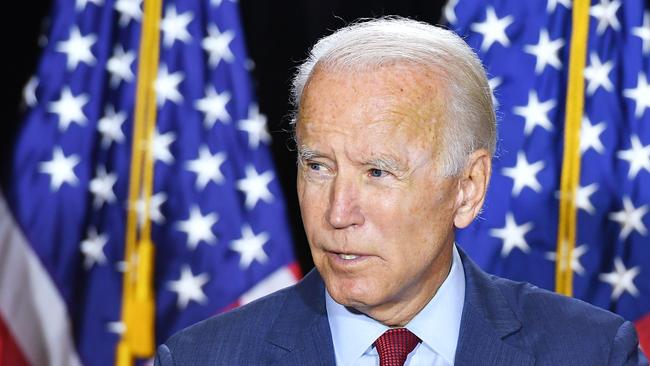2020 race: Joe Biden supporters more likely to vote postal by four to one
Wall Street Journal/NBC News survey finds Democrats are more confident than Republicans that votes would be tallied accurately.

Supporters of presumptive Democrat nominee Joe Biden are more likely than Trump supporters to say they will vote by mail and are more likely to trust the accuracy of November’s ballot count, a new Wall Street Journal/NBC News poll finds, underscoring partisan differences over how the election should be conducted.
Some 47 per cent of voters who back Mr Biden plan to vote by mail rather than in person, compared with 11 per cent of Trump supporters. By contrast, 66 per cent of Trump voters say they plan to cast ballots in person on November 3 compared with 26 per cent of Biden supporters.
The results suggest that the two parties, in large measure, will have different voting experiences, though voters’ plans could still change. The difference could also affect perceptions of which candidate is leading in the vote tally, since mailed ballots can take longer to count than in-person votes, and some election experts warn the winner might not be clear on election night.
“If the absentee ballots are favouring a different candidate than the one that was favoured in the in-person voting, then, yes, we could see the victor change” in the course of vote-counting, said Stanford University law professor Nathaniel Persily.
In the new survey, about 20 per cent of each candidate’s supporters say they will vote before election day in person.
With coronavirus raising fears among many Americans about in-person voting, several states led by either party have changed election rules to make it easier to cast a ballot by mail. The rules vary by state, and some states, mostly those led by Republicans, haven’t eased their rules.
President Donald Trump has previously said he believes mail-in voting benefits Democrats and that states that send a ballot to every voter create opportunities for fraud. While isolated cases of fraud linked to mailed ballots have occurred, researchers haven’t found it to be widespread.
Mailed ballots can take longer to count than in-person votes for several reasons, such as the time it takes to open return envelopes or verify signatures, depending on what a state’s law requires, as well as on the staffing and technology available at local election offices. It took a week or more to declare the winner in some closely watched races during the primaries in Kentucky and New York.
A recent study by Stanford researchers found that all-mail elections didn’t noticeably benefit either party.
The Journal/NBC News poll found Americans are sharply divided by party in confidence that votes will be counted accurately. Some 55 per cent of Democrats but 36 per cent of Republicans said they were confident the November results would be tallied accurately. The gap was even wider when voters were asked about votes cast by mail. Some 65 per cent of Democrats but only 23 per cent of Republicans said mailed ballots would be properly counted.
Among all voters, 45 per cent said they believed the November results would be tallied accurately, with 45 per cent saying they lacked confidence. Trust has declined from 2016, when a Journal/NBC News survey found that 59 per cent said they had confidence that the presidential election results would be counted accurately. Asked about mailed ballots, 45 per cent of voters said they had confidence in an accurate count, and 51 per cent said they lacked confidence.
While Mr Trump has said he opposes automatically mailing ballots to every voter, he says he is OK with voters being allowed to request a by-mail ballot in advance of the election, which he calls absentee voting. In the new poll, 33 per cent said they would prefer that every voter in their state be mailed a ballot, while 21 per cent said every voter in their state should receive an application in the mail that they would need to send back in order to receive a ballot. Some 42 per cent opposed both options.
The poll surveyed 900 registered voters from August 9-12. The margin of error was plus or minus 3.27 percentage points.
The Wall Street Journal



To join the conversation, please log in. Don't have an account? Register
Join the conversation, you are commenting as Logout